Select Language

U.S. stock futures are pointing higher at the start of the new year, setting markets up to snap a four-day losing streak as investors return to themes that powered gains through much of 2025.
S&P 500 Futures were up about 0.6% at 6:40 AM ET (11:40 GMT) in New York, while Nasdaq 100 Futures contracts climbed 1.1%. Dow Jones Industrial Average futures added 0.4%.
Trading conditions are expected to remain thin, with many investors yet to return from the holiday break and fuller participation unlikely until early next week. Still, strategists at Deutsche Bank cautioned against reading too much into the early move.
“We shouldn’t extrapolate too far, as the first trading day has been an incredibly poor guide in recent times to how the rest of the year plays out,” strategists including Jim Reid wrote.
Still, the rebound reflects renewed appetite for the forces that dominated last year, particularly enthusiasm for artificial intelligence-linked stocks that helped drive all three major U.S. indexes to record highs in 2025.
That momentum faded into year-end, however, with the S&P 500, Nasdaq and Dow all posting declines over the final four sessions of 2025. The pullback ran counter to expectations for a so-called Santa Claus rally, which typically sees stocks rise over the last five trading days of December and the first two sessions of January.
The broader global backdrop remains supportive. Asian equities hit fresh records overnight, led by gains in chipmakers and AI-related names. Even so, some strategists are urging caution. Barclays warned that equity markets could turn choppy as they enter 2026 at elevated levels that are “over reliant on AI success.”
The bank nonetheless expects further gains over the year, citing resilient corporate earnings and a favorable balance between economic growth and monetary policy.
Looking ahead, investors see U.S. monetary policy as a key driver. Expectations of a more dovish Federal Reserve, reinforced by recent economic data and speculation around future leadership, have led markets to price in additional rate cuts, setting the tone for global assets in 2026.
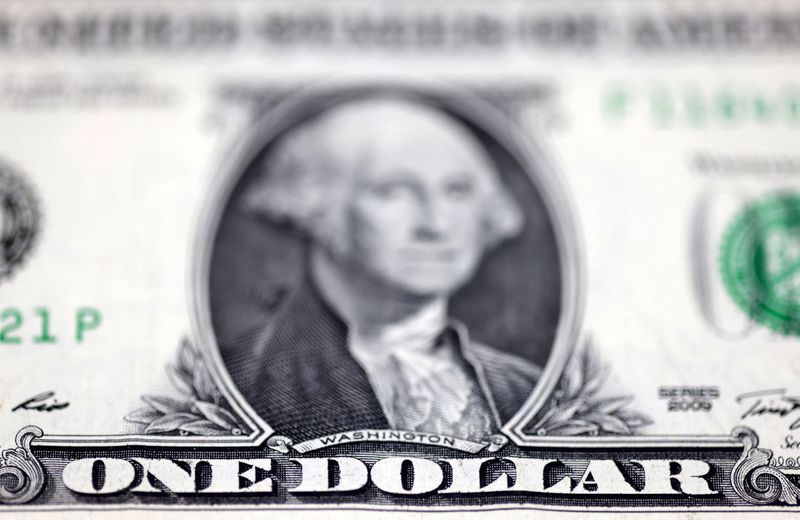
The dollar is heading for its sharpest annual retreat in eight years as investors anticipate further declines if the next Federal Reserve chair implements more interest-rate cuts.
The Bloomberg Dollar Spot Index has fallen 8.1% in 2025. The greenback initially tumbled following Donald Trump’s "Liberation Day" tariffs in April and has faced continued pressure as the president campaigned to install a dovish appointee as the next Fed chair.
Markets appear to be pricing in at least two rate reductions for 2026, creating a divergent policy path from other developed economies that diminishes the dollar’s attractiveness to investors.
The euro has strengthened against the dollar, supported by controlled inflation and anticipated European defense spending increases that have kept rate-cut expectations minimal. Meanwhile, traders in Canada, Sweden and Australia are betting on interest rate increases.
Attention remains focused on who will replace Jerome Powell when his term as Federal Reserve chair concludes in May.
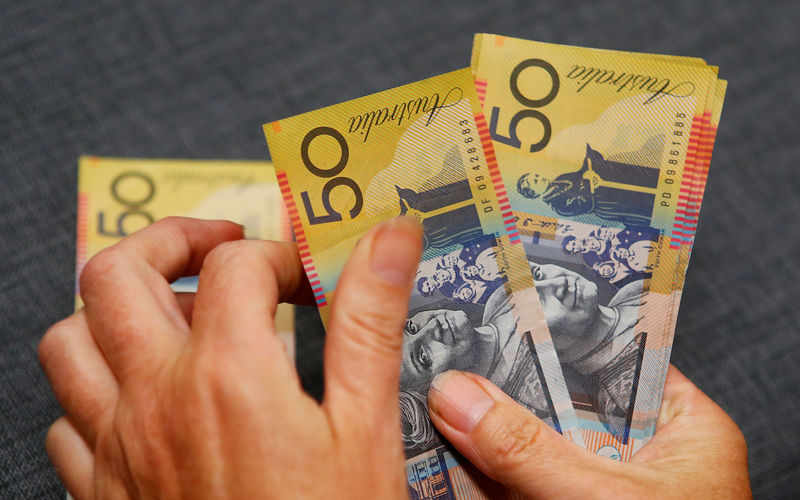
Major currencies traded in narrow ranges on Tuesday, maintaining subdued behaviour amid thin year-end trading volumes, as investors cautiously awaited Federal Reserve meeting minutes due later in the day for clues on the central bank’s policy outlook into 2026.
Activity across regional foreign exchange markets remained muted, with many participants sidelined ahead of the New Year holiday.
At 04:50 ET (09:50 GMT), the US Dollar Index was little changed against a basket of major peers, while US Dollar Index Futures edged down 0.1%. Yen’s USD/JPY pair fell 0.1% while GBP/USD rose 0.1%. EUR/USD was flat on the day.
Fed minutes eyed for 2026 rate outlook
Investors were focused on the release of minutes from the Federal Reserve’s December policy meeting, which are expected to shed light on discussions following the central bank’s decision to cut interest rates earlier this month.
Market participants anticipate the minutes may reveal divisions among policymakers over the pace and extent of further easing, particularly as inflation continues to cool.
Expectations that the Fed will deliver additional rate cuts in 2026 have been a key driver of currency markets in recent weeks. Traders have priced in the possibility of multiple cuts next year, a shift that has weighed on the dollar and, at times, offered support to emerging Asian currencies.
However, uncertainty over the timing and scale of easing has kept investors cautious, limiting directional moves.

Nvidia last week disclosed a non-exclusive licensing agreement with AI chip startup Groq, a deal that also brings Groq’s founder, president and key engineers into the AI chip giant while leaving the company operating independently.
Under the agreement, Nvidia will license Groq’s inference technology, which is designed for ultra-low latency AI workloads.
According to media reports, Nvidia had agreed to buy Groq for $20 billion in cash, but neither company confirmed this yet.
Citi analyst Atif Malik sees the deal as “a clear positive on two fronts.”
With the deal, Nvidia “is indirectly acknowledging that specialized inference architectures are important for real-time and cost-efficient AI deployments to address competition from TPUs and perhaps to a lesser extent upcoming startups.”
Moreover, while a licensing approach allows Nvidia to avoid regulatory scrutiny tied to a full takeover.
Malik added that licensing Groq’s IP lets Nvidia “swiftly add more inference-optimized compute stacks to its road map without building the technology from the ground up.”
Stifel Ruben Roy highlighted that Groq’s language processing units (LPUs) are optimized for fast decode inference and ultra-low latency.
Roy said Groq’s SRAM-based architecture could complement Nvidia’s upcoming Vera Rubin platform, allowing systems to be tuned for different workloads.
“We believe that the addition of an SRAM-based LPUs will add another option where token/$ and token/Watt metrics are optimized depending on workload,” Roy said.
Truist analyst William Stein described the tie-up as a competitive response to growing pressure from alternative inference architectures, particularly TPUs.
The analyst said the move is designed “to fortify NVDA’s competitive positioning, specifically vs. the TPU,” adding that while the reported $20 billion price tag is large in absolute terms, it is modest relative to Nvidia’s cash position and near-term free cash flow generation.
In a separate note, UBS analyst Timothy Arcuri said the deal “could bolster NVDA’s ability to service high-speed inference applications,” an area where traditional GPUs are less efficient due to reliance on off-chip high-bandwidth memory.
He added that the move is consistent with Nvidia’s push toward offering “ASIC-like architectures in addition to its mainstream GPU roadmap,” alongside initiatives such as Rubin CPX.

Nvidia has agreed to license chip technology from startup Groq and hire away its CEO, a veteran of Alphabet’s Google, Groq said in a blog post on Wednesday.
The deal follows a familiar pattern in recent years where the world’s biggest technology firms pay large sums in deals with promising startups to take their technology and talent but stop short of formally acquiring the target.
Groq specializes in what is known as inference, where artificial intelligence models that have already been trained respond to requests from users. While Nvidia dominates the market for training AI models, it faces much more competition in inference, where traditional rivals such as Advanced Micro Devices have aimed to challenge it as well as startups such as Groq and Cerebras Systems.
Nvidia has agreed to a "non-exclusive" license to Groq’s technology, Groq said. It said its founder Jonathan Ross, who helped Google start its AI chip program, as well as Groq President Sunny Madra and other members of its engineering team, will join Nvidia.
A person close to Nvidia confirmed the licensing agreement.
Groq did not disclose financial details of the deal. CNBC reported that Nvidia had agreed to acquire Groq for $20 billion in cash, but neither Nvidia nor Groq commented on the report. Groq said in its blog post that it will continue to operate as an independent company with Simon Edwards as CEO and that its cloud business will continue operating.
In similar recent deals, Microsoft’s top AI executive came through a $650 million deal with a startup that was billed as a licensing fee, and Meta spent $15 billion to hire Scale AI’s CEO without acquiring the entire firm. Amazon hired away founders from Adept AI, and Nvidia did a similar deal this year. The deals have faced scrutiny by regulators, though none has yet been unwound.
"Antitrust would seem to be the primary risk here, though structuring the deal as a non-exclusive license may keep the fiction of competition alive (even as Groq’s leadership and, we would presume, technical talent move over to Nvidia)," Bernstein analyst Stacy Rasgon wrote in a note to clients on Wednesday after Groq’s announcement. And Nvidia CEO Jensen Huang’s "relationship with the Trump administration appears among the strongest of the key US tech companies."
Groq more than doubled its valuation to $6.9 billion from $2.8 billion in August last year, following a $750 million funding round in September.
Groq is one of a number of upstarts that do not use external high-bandwidth memory chips, freeing them from the memory crunch affecting the global chip industry. The approach, which uses a form of on-chip memory called SRAM, helps speed up interactions with chatbots and other AI models but also limits the size of the model that can be served.
Groq’s primary rival in the approach is Cerebras Systems, which Reuters this month reported plans to go public as soon as next year. Groq and Cerebras have signed large deals in the Middle East.
Nvidia’s Huang spent much of his biggest keynote speech of 2025 arguing that Nvidia would be able to maintain its lead as AI markets shift from training to inference.
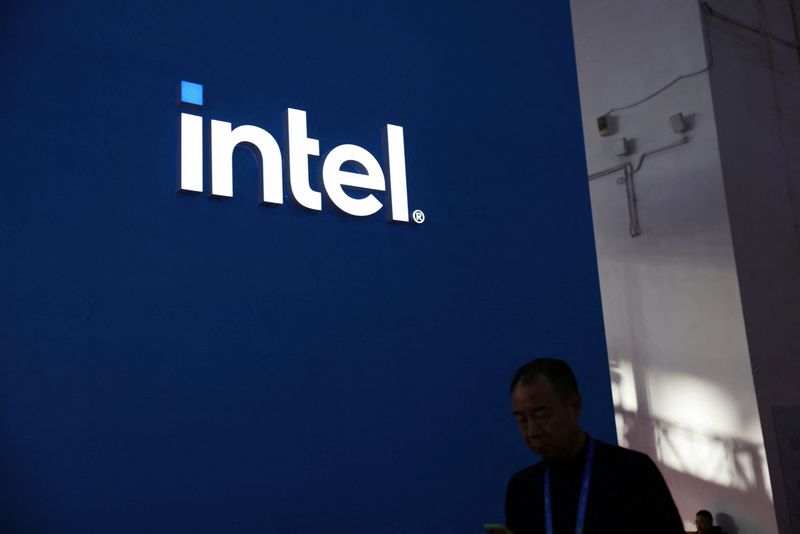
Intel Corporation stock dropped 2.7% in premarket trading after Reuters reported that Nvidia stopped testing Intel’s 18A chip manufacturing process.
Accordingly, Nvidia had been evaluating whether it could manufacture its chips using Intel’s advanced 18A production technology but decided not to move forward with the tests.
An Intel spokesperson told Reuters that the company’s 18A manufacturing technologies are "progressing well," without providing further details about Nvidia’s decision to halt testing.
The news comes just months after the two semiconductor giants announced a major collaboration in September. Under that agreement, Intel would develop custom x86 CPUs for Nvidia’s AI infrastructure platforms, while also creating x86 system-on-chips integrating Nvidia RTX GPU chiplets for personal computing devices.
As part of the partnership, Nvidia had committed to investing $5 billion in Intel’s common stock at a purchase price of $23.28 per share, subject to regulatory approvals.
The reported testing halt raises questions about the technical viability of Intel’s advanced manufacturing process, which the company has positioned as crucial to its turnaround strategy and efforts to compete with Taiwan Semiconductor Manufacturing Company in the foundry business.
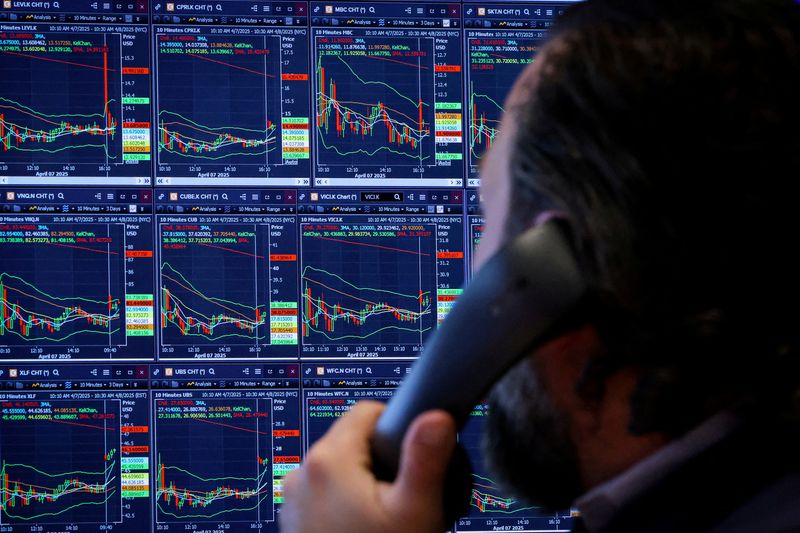
Gold prices have surged to another record high, extending its historic rally as investors balanced stabilizing moves in Japan’s bond and currency markets with a heavy slate of U.S. economic data ahead of the holidays.
Precious metals outperformed while equities showed mixed signals, with positioning data pointing to growing caution beneath the surface of year-end markets.
1.Gold and precious metals extend historic rally
Gold climbed to a fresh all-time high on Tuesday, marking the 50th session this year in which the metal has set a new record, as investors continued to favor precious metals amid easing yields, currency volatility and longer-term inflation hedging.
Gold Futures hit as high as $4,530.30/oz, marking a fresh all-time high, while gold spot prices traded as high as $4,497.82/oz.
Yardeni Research amended its outlook for gold prices following the latest surge. “When the price of an ounce of gold rose above $3,000 at the start of this year, we projected it would reach $4,000 by the end of this year and $5,000 by the end of next year,” Yardeni said.
“We are raising our year-end 2026 target to $6,000. We still expect to see $10,000 hit by the end of the decade.”
Silver Futures also rose to a new peak, while Platinum Futures and Palladium Futures also extended gains. In contrast, Brent Oil Futures and Crude Oil WTI Futures were mostly flat.
2.Japan bonds and yen find footing after BOJ volatility
In Japan, government bonds and the yen showed signs of stabilization after sharp moves following the Bank of Japan’s 25 basis-point rate hike on Friday. Yields surged initially after policymakers signaled further tightening could be ahead, but subsequent weakness in the yen raised uncertainty about how aggressively the central bank could proceed without stoking inflation.
Currency pressures began to ease after Finance Minister Satsuki Katayama said Japan had a “free hand” to act in foreign-exchange markets and described recent moves as speculative rather than fundamental. The USD/JPY pair traded about 0.7% lower on Tuesday.
Bond markets responded by retracing some of their recent losses. Japan 10-Year yields fell about 4.6 basis points, while Australia 10-Year yields declined 3.1 basis points.
Adding to the calmer tone, Prime Minister Takaichi said she would not pursue “irresponsible” tax cuts, easing concerns about fiscal pressure alongside tighter monetary policy.
3. U.S. data deluge ahead of the holiday break
Attention now turns to a busy slate of U.S. economic data, the final batch before Christmas. Investors will see a delayed third-quarter GDP report later in the session, though it is backward-looking and reflects conditions prior to the government shutdown.
More focus is likely to fall on the Conference Board’s December consumer confidence reading, particularly after November’s index dropped to its lowest level since the turmoil surrounding Liberation Day in April.
Other releases include November industrial production, preliminary October durable goods orders, and the Richmond Fed’s manufacturing index.
4. Novo Nordisk jumps on Wegovy pill approval
In corporate news, Novo Nordisk A/S Class B (CSE:NOVOb) shares jumped more than 5% in Copenhagen after the company won U.S. approval to sell a pill version of its blockbuster obesity treatment Wegovy.
The decision marks a significant step in expanding access to obesity drugs beyond injections and could broaden the addressable market.
Elsewhere, shares of Oersted AS (CSE:ORSTED) have stabilized on Tuesday after the Trump administration moved to suspend leases for several offshore wind projects under construction along the U.S. East Coast, citing national security concerns.
The decision directly affects Ørsted’s Revolution Wind and Sunrise Wind developments, alongside other major projects including Vineyard Wind 1, Dominion Energy’s Coastal Virginia Offshore Wind project and Equinor’s Empire Wind 1.
The company’s stock fell more than 13% following the announcement, marking the sharpest decline among offshore wind developers, while shares of Dominion Energy (NYSE:D) falling 3.7% on Monday.
5. Positioning cools into year-end, Citi says
Positioning data suggests investors have grown more cautious into year-end. Citigroup strategists led by Chris Montagu said investors added new short positions across U.S. equity-index futures last week, leaving net positioning near neutral.
Allocation to U.S. large caps has cooled, while positioning in the Russell 2000 has turned bearish, reversing the prior week’s optimism. Net profit levels improved across most indices, with the Nasdaq the notable exception.

Gold prices are climbing again, with spot bullion up about 1.6% so far on Monday, as a mix of geopolitical risk, interest-rate expectations and strong demand continues to support the rally.
In a note to clients, UBS strategists led by Giovanni Staunovo noted that gold has recovered from a steep decline in late October and is once again reinforcing its status as one of the strongest-performing assets this year.
The bank notes that bullion is consolidating gains after a sharp advance, with prices sitting at record levels.
One key driver is rising geopolitical uncertainty. UBS points to renewed tensions after U.S. President Donald Trump ordered a “blockade” of sanctioned oil tankers linked to Venezuela, alongside reports that Washington is preparing additional sanctions on Russia’s energy sector if peace talks over Ukraine fail.
UBS says gold prices have risen over the past week “amid renewed geopolitical uncertainty,” highlighting the metal’s role as a hedge during periods of global stress.
A second factor is the outlook for U.S. interest rates. UBS notes that the U.S. real interest rate, “the opportunity cost of holding non-yielding assets like gold,” has fallen to its lowest level since mid-2022.
The bank adds that gold is “supported by the outlook for U.S. rate cuts,” which typically boosts demand for bullion.
Finally, UBS highlights persistent buying from central banks and investors.
“Demand from central banks and investors is still near record highs,” UBS wrote, adding that it expects central bank purchases of 900 to 950 metric tons this year.
“In our view, gold’s store-of-value characteristics, liquidity, and ability to hedge against shocks justify a continued place in well-diversified portfolios,” UBS declared.
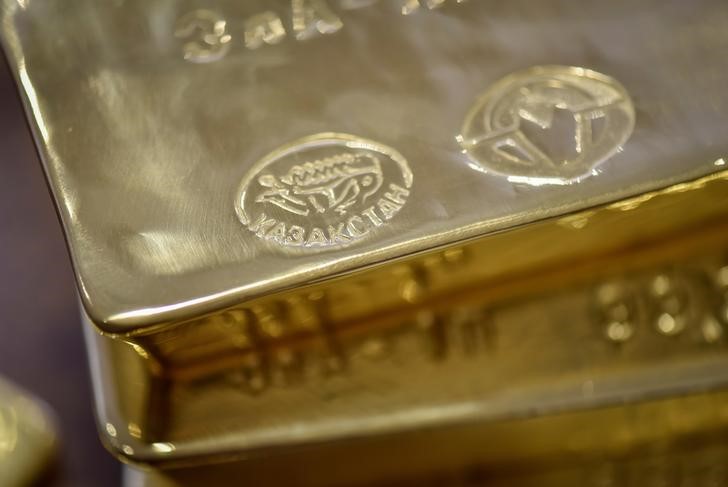
Gold prices fell slightly in Asian trade on Friday and were set for a mildly positive week, while silver and platinum outperformed and remained close to record highs amid strong safe haven demand.
Broader metal prices also advanced, after softer-than-expected U.S. inflation data spurred bets on more interest rate cuts by the Federal Reserve. Metal prices rose even as the dollar recovered marginally from recent losses.
Spot gold fell 0.1% to $4,326.89 an ounce, remaining close to an October record high, while gold futures for February fell 0.2% to $4,354.70/oz by 00:48 ET (05:48 GMT). Bullion prices were trading up about 0.4% this week.
Silver, platinum head for bumper weekly gains
Silver and platinum prices, however, raced past gold on Friday and the week, with both precious metals coming close to record highs.
Spot silver rose 0.5% to $65.8365/oz and was up 6% this week in its fourth consecutive week of gains. Spot platinum rose 0.6% to $1,937.50/oz, and was up 10.5% this week.
Other precious metals also rallied this week on similar trends. Spot palladium rose 1.4% to $1,709.20/oz, and was headed for a 14% spike this week.
Demand for the two largely outpaced gold in recent weeks, as investors sought more real world assets amid growing concerns over slowing economic growth in the developed world.
Silver and platinum offer stability that is comparable to gold, but at substantially lower prices when compared to the yellow metal, especially after a strong rally in gold prices through the past year.
Expectations of silver and platinum supply shortages, in the coming year, underpinned the two metals.
US CPI reads weaker than expected; analysts say Dec reading to have more bearing
Metal prices broadly advanced after U.S. consumer price index inflation data for November read softer than expected. The print spurred confidence in more interest rate cuts by the Federal Reserve.
But analysts warned that November’s reading was potentially disrupted by a long-running government shutdown in October and early-November. Goldman Sachs analysts said that December’s CPI reading was likely to provide more definitive cues on U.S. inflation and interest rates, and that the November reading was unlikely to factor into the Fed’s outlook.
Uncertainty over the U.S. economy was a major driver of haven demand this week, after an unexpected rise in unemployment sparked concerns over stagflationary risks for the U.S. economy.

Gold prices fell slightly in Asian trade on Thursday, while silver hovered close to recent record highs as markets awaited key U.S. inflation data and a host of major central bank decisions.
Metal markets faced some profit-taking after rallying sharply over the past week on increased uncertainty over the U.S. economy. Haven demand still remained high ahead of the U.S. inflation print, which is due later on Thursday.
A potential hitch in Russia-Ukraine peace talks– amid disagreements over territory concessions and Moscow’s frozen overseas assets– also lent support to safe haven assets.
Spot gold fell 0.1% to $4,334.48 an ounce, while gold futures for February fell 0.2% to $4,364.90/oz by 00:42 ET (05:42 GMT).
Spot silver rose 0.5% to $66.5095/oz, remaining close to a record high of $66.90 hit on Wednesday. Platinum outperformed, with spot prices rising as high as $1,977.80/oz and coming back in sight of their record peak of more than $2,200/oz.
Silver and platinum vastly outpaced gold this week. While bullion was up 0.7%, silver was sitting on an over 7% gain, while platinum was up 12.2%.
US economic uncertainty builds ahead of CPI data
Uncertainty over the U.S. economy rose this week, especially as official government readings provided mixed signals on the labor market. The Federal Reserve’s asset buying operations also spurred some doubts over market liquidity in the country.
Markets were now looking to upcoming consumer price index inflation data for cues on the world’s largest economy. The data is expected to show headline CPI inflation rising slightly, while core CPI is expected to remain steady at 3% annually.
The labor market and inflation are the Fed’s two biggest considerations for adjusting policy. But in addition to interest rates, markets were also concerned over a potentially stagflationary period for the U.S. economy– a scenario where unemployment increases in tandem with inflation.
Fears of such a scenario also drove outsized buying in gold and other precious metals.
BOE, ECB, and BOJ decisions on tap
Interest rate decisions from the Bank of England and the European Central Bank are due on Thursday, while the Bank of Japan is due on Friday.
The BOE is expected to cut interest rates by 25 basis points as it moves to further shore up a laggard UK economy. The ECB is expected to stand pat after slashing rates this year, amid some signs of resilience in the eurozone.
The Bank of Japan is an outlier, with markets widely pricing in a 25 basis point rate hike. This comes amid persistent yen weakness and sticky Japanese inflation, with the BOJ also having signaled it will consider a rate hike in December.
Focus will be squarely on the three banks’ outlook on their respective economies going into 2026, amid growing concerns over slowing growth in the developed world.

